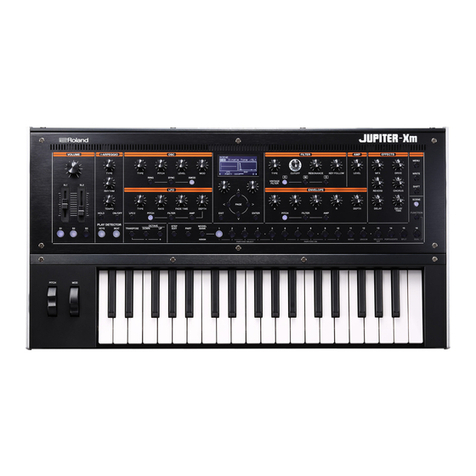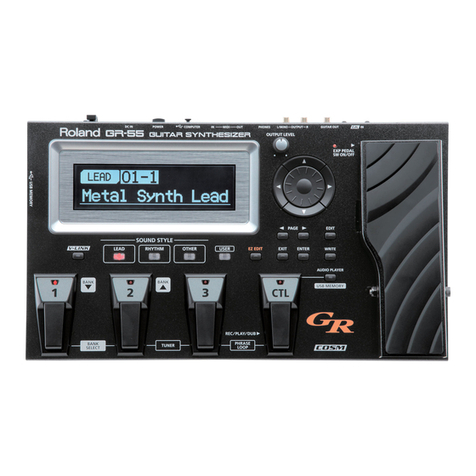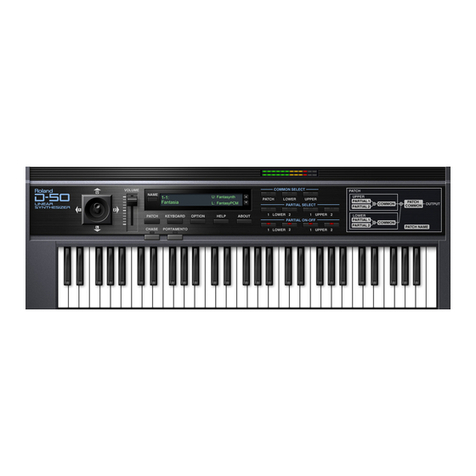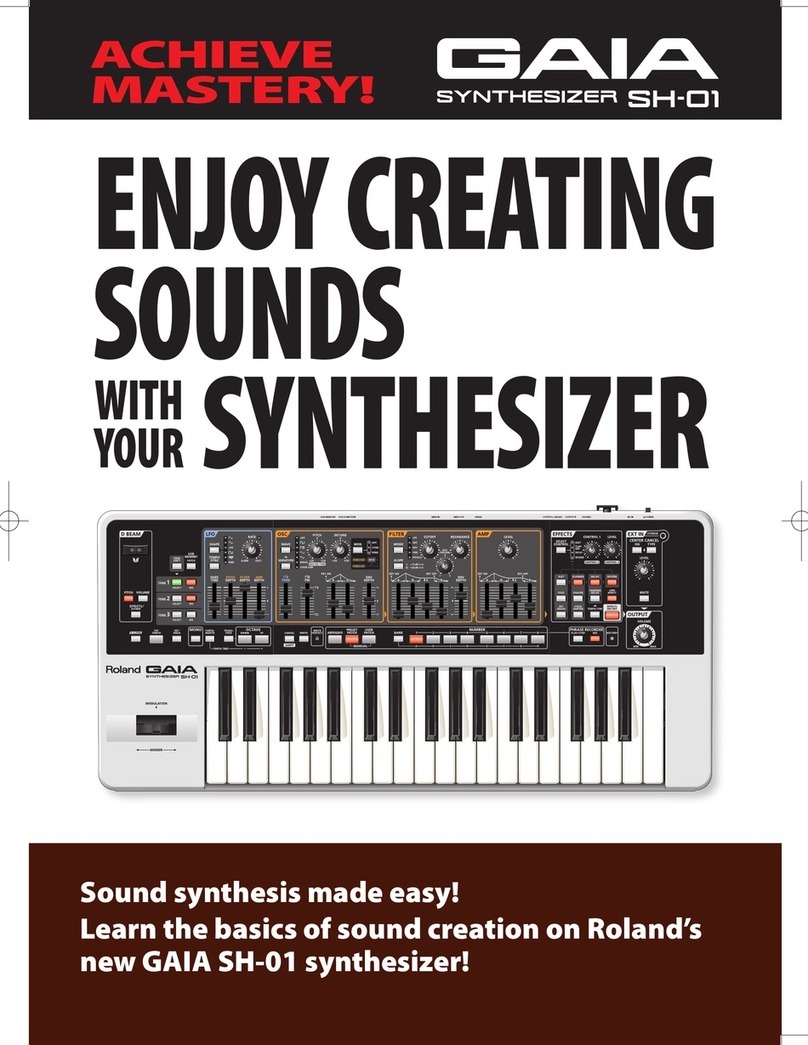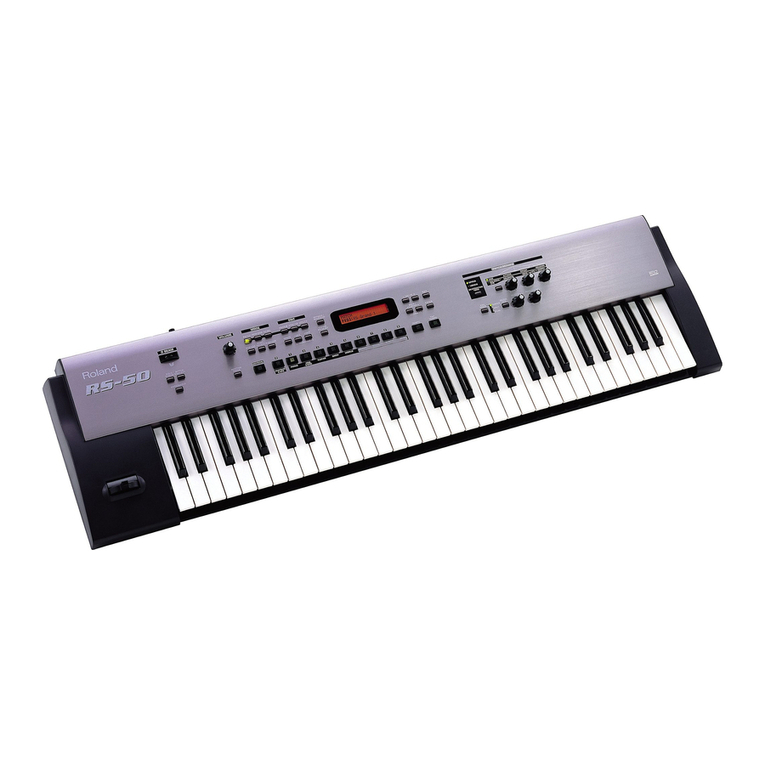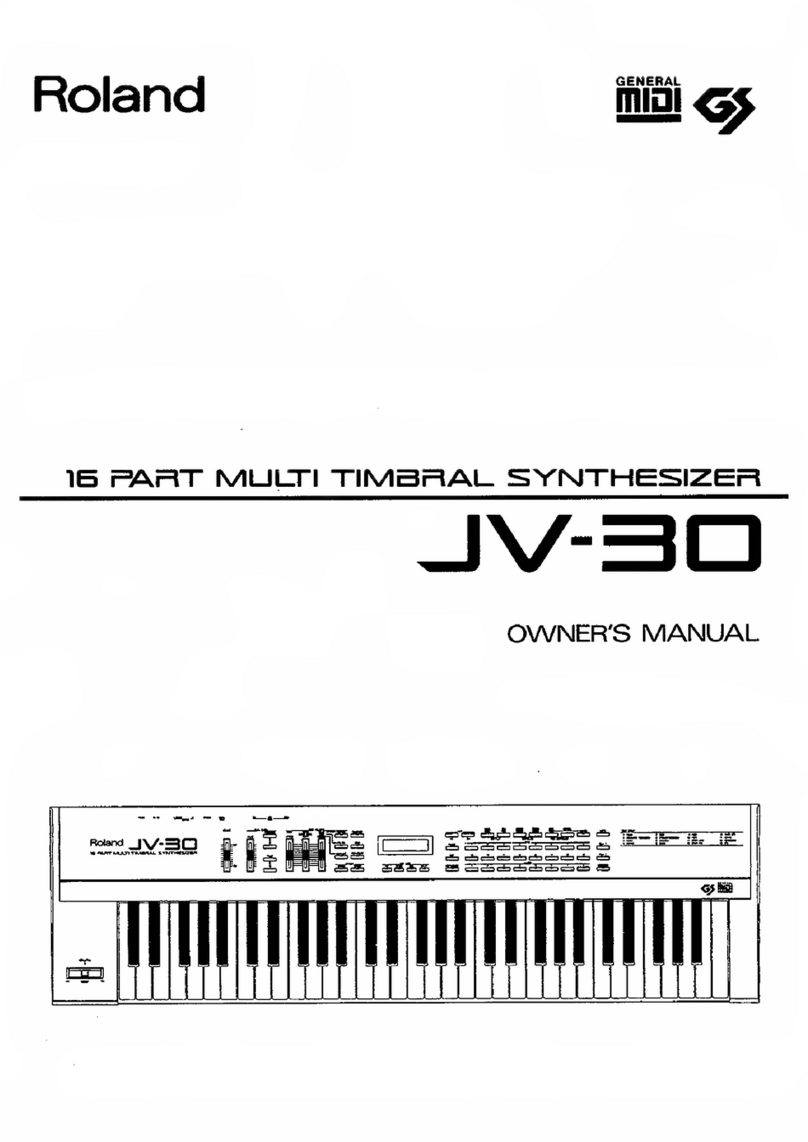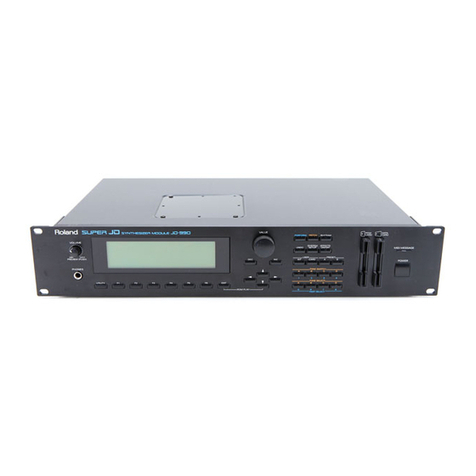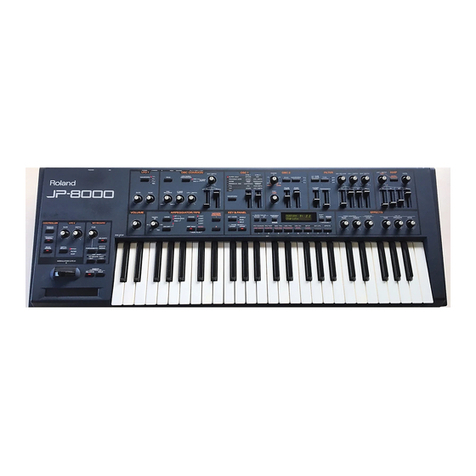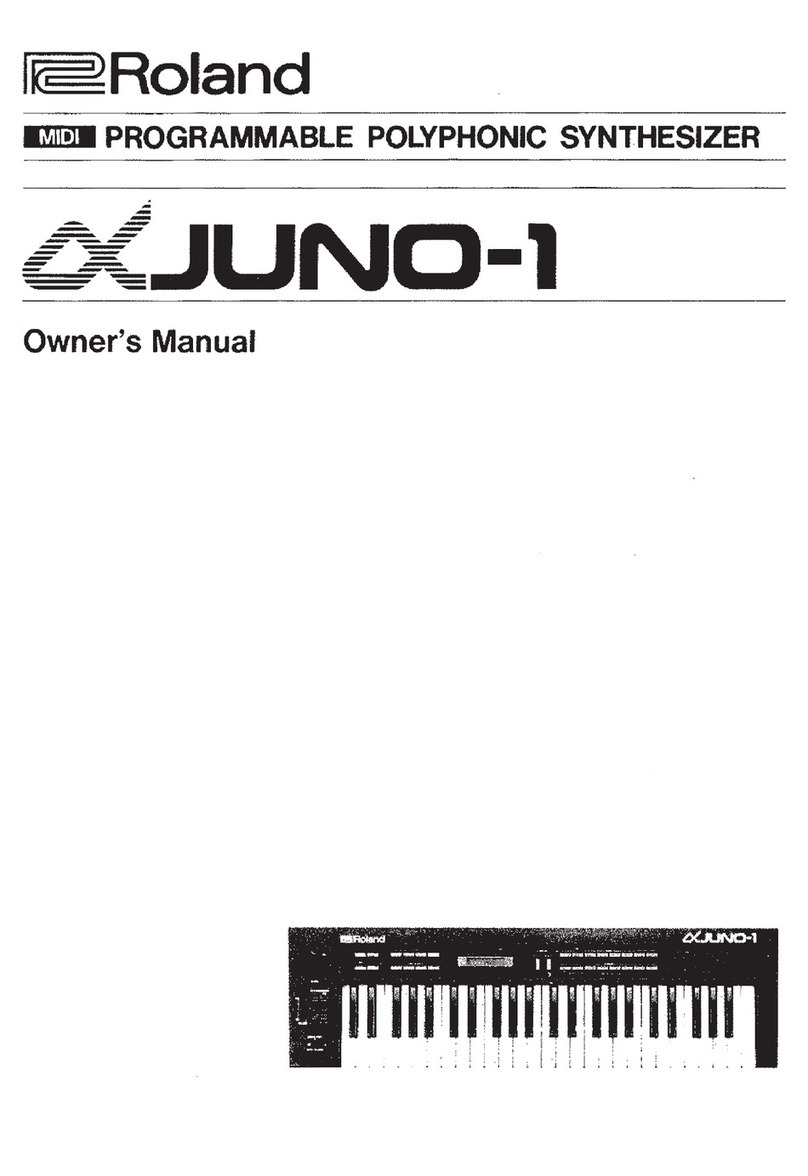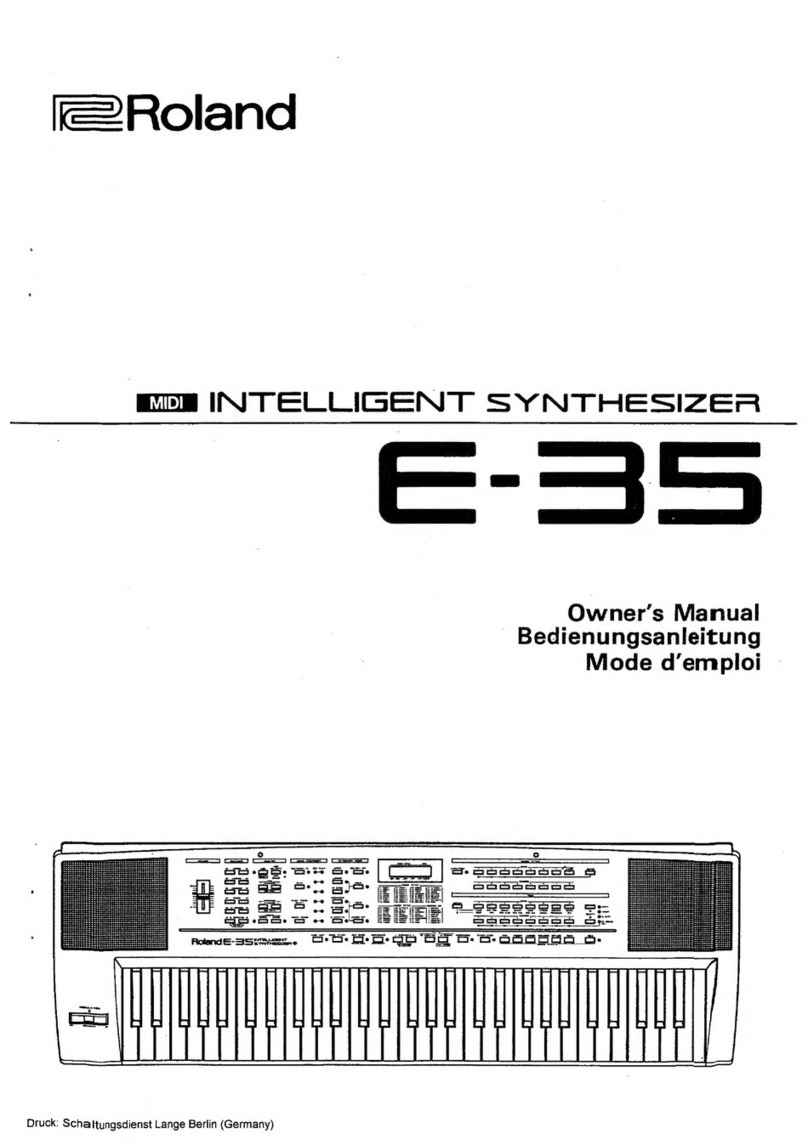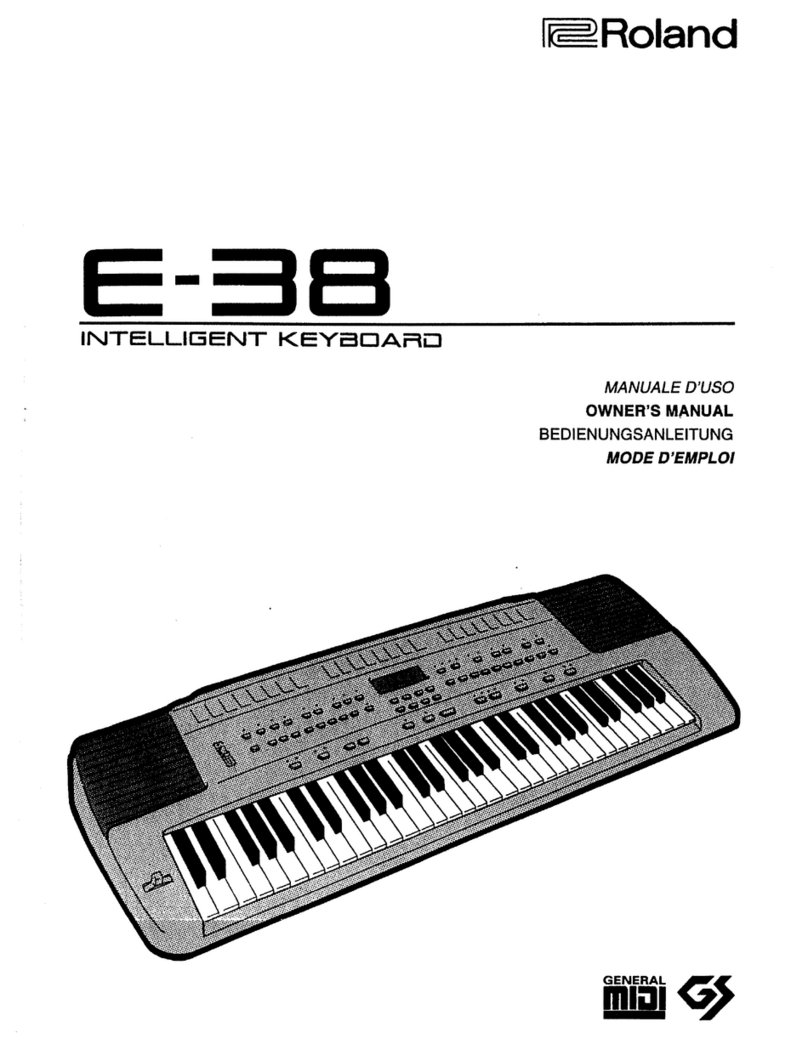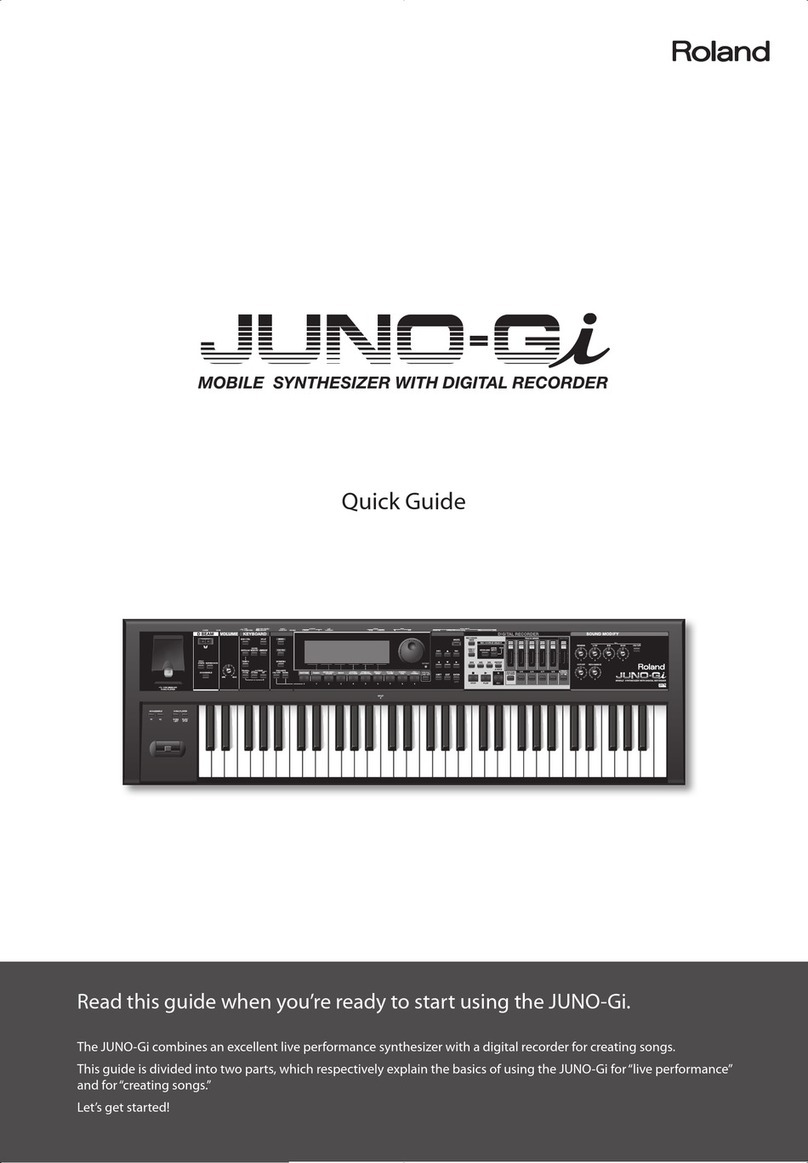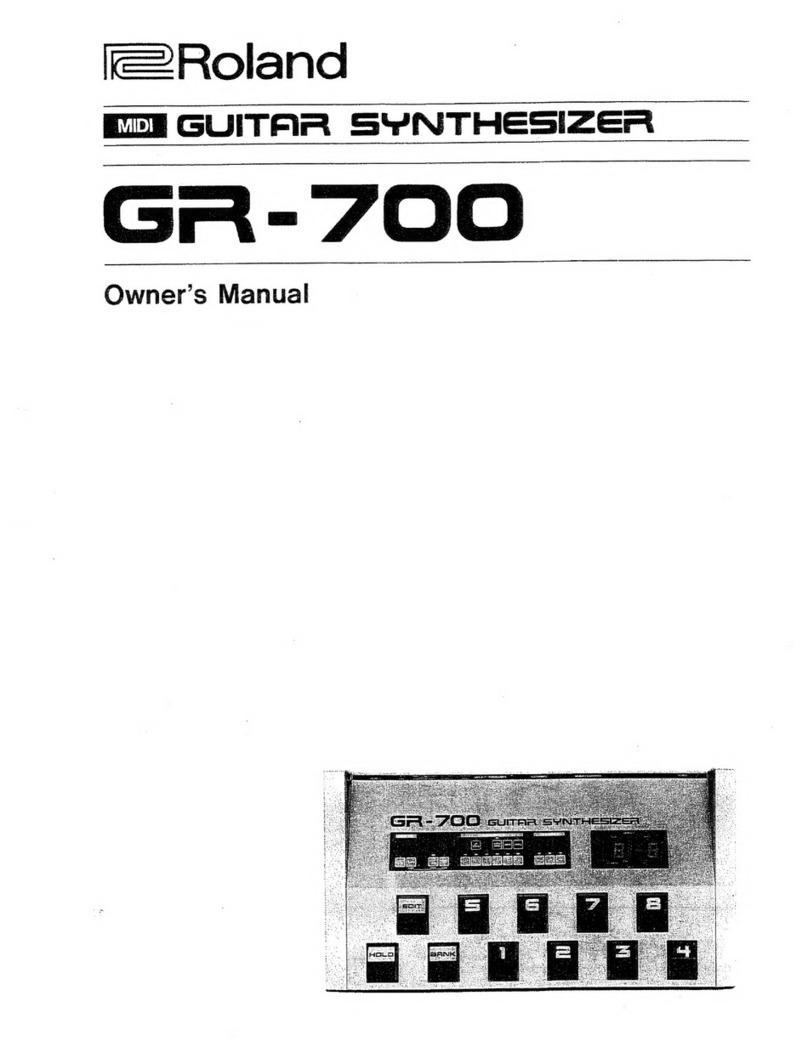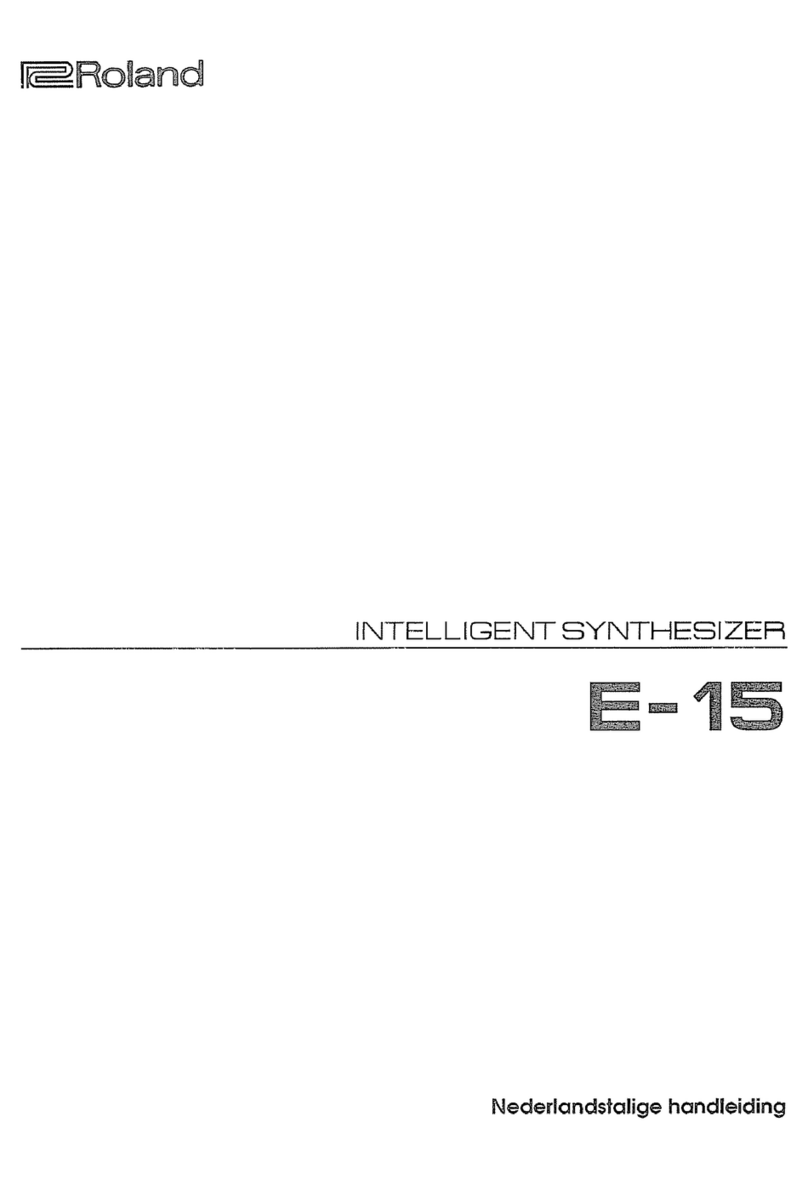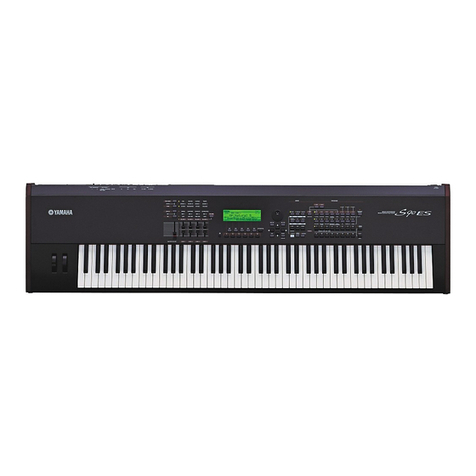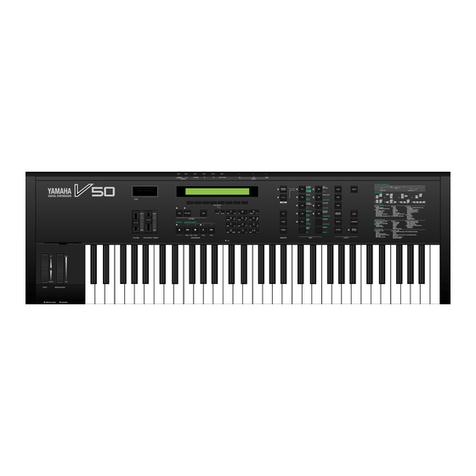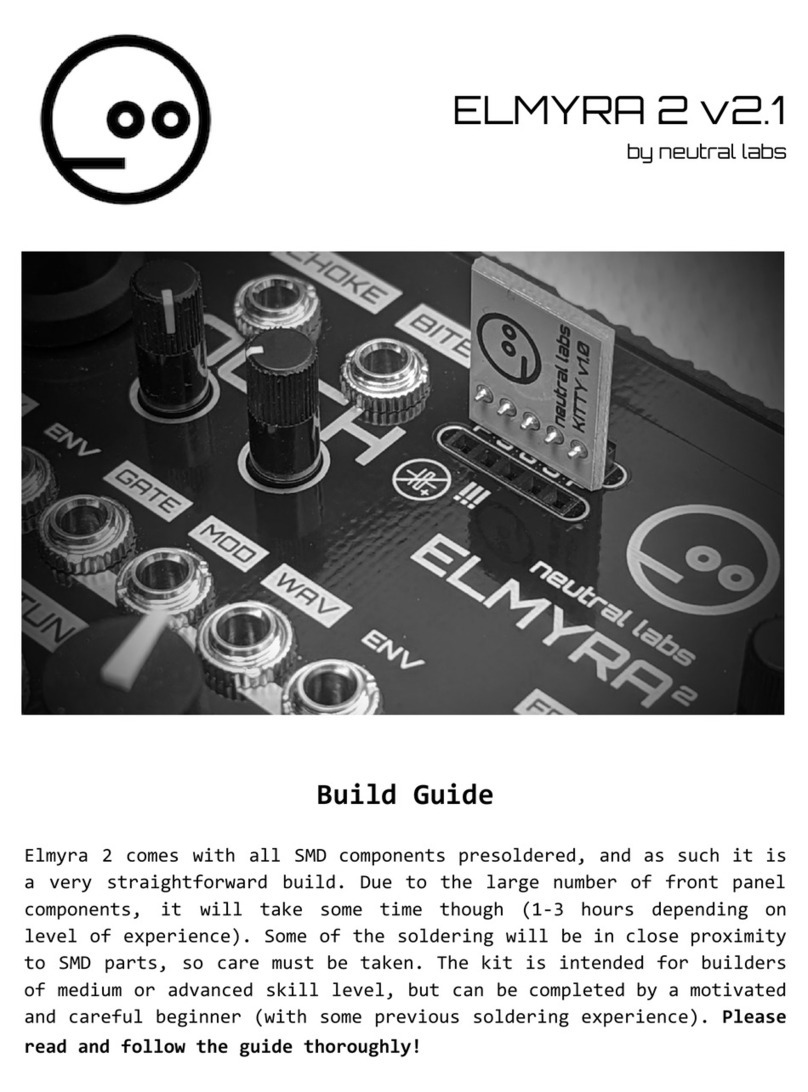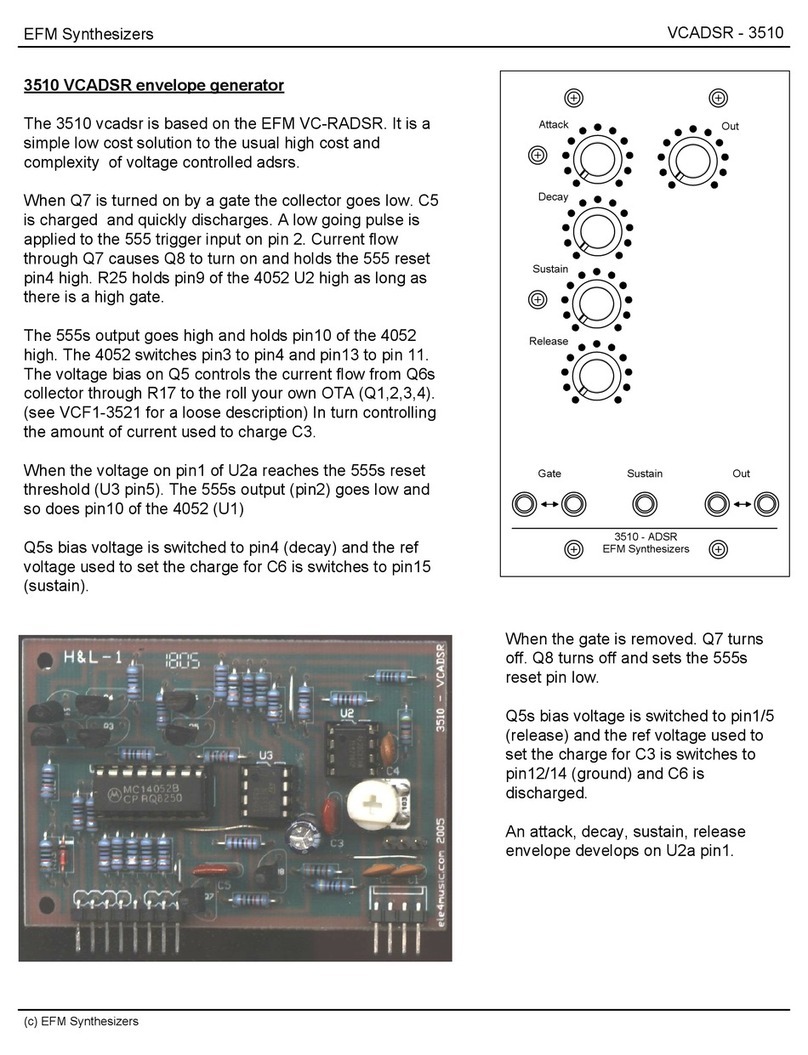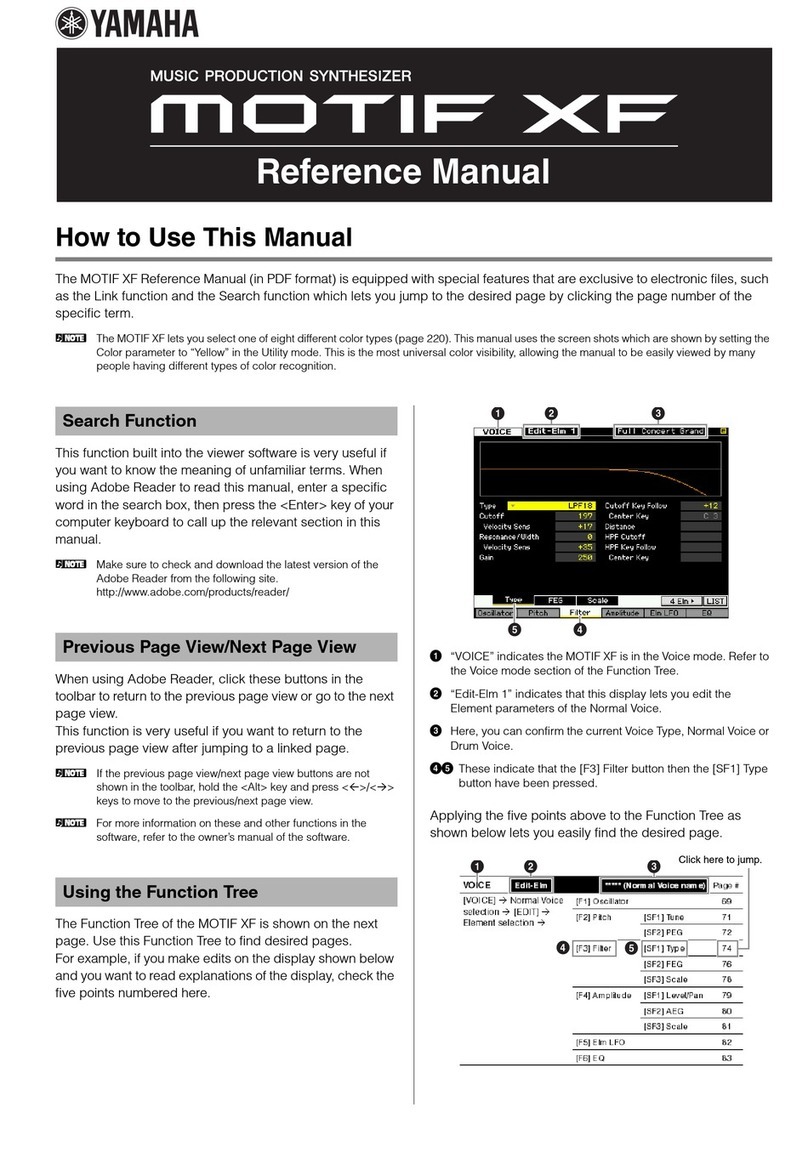
INTRODUCTION CONTENTS
The Roland PG— 10 is aprogrammer specially
designed for the D-10, D-20 and D-110
to make sound programming quicker and
easier.
To make the best use of this unit, please
read the owner's manual carefully.
Q] Panel Description 3
[2] Connections 4
[3] Operation 5
1. Power —up 5
2. Preparation :7
3. Editing Data of
the D-10 or D-20 8
a. Patch Editing 8
b. Timbre Editing 11
c. Tone Editing 12
4. Editing Data of the D-110 19
a. Patch Editing 19
b. Timbre Editing 23
c. Tone Editing 24
5. Functions for Editing 28
a. Previous Value 28
b. Undo 29
c. Partial Copy 30
d. Partial Initialize 31
6. Writing 33
a. Patch/Timbre Writing
(-D-10/D-20) 34
b. Patch/Timbre Writing
(-D-110) 36
c. Tone Writing
(-D-lO/D-20. D-110) 38
7. Changing MIDI Unit Numbers 39
[4] Sample Notes 40
{5} Specifications 43
Bescheinigung des Herstellers /Importeura
Hiermtt wtrd bescheiniqt, daS der/die/das
ROLAND LINEAR SYNTHESIZER PROGRAMMER PG-10
in Obereimtimmung mit den Sestimmungen der
Amtsbl. Vfg 1046 /1984
(Amltt>l«ltvtrlugung|
funk-entstort isi.
Der Oeutschen Bundespost wurde das fnverkehrbringen dieses Geraies
angezeigt und die Berechtigung zur Uberpriifung der Serie aut Einhattung
der Bestimmungen eir>geraurnt.
Roland Corporation Osaka /Japan
ic On HariitOvn/lmcKHIcuri
RADIO AND TELEVISION INTERFERENCE
TbB B
let utM proparly. i
Ktia ana lelnwiilo-
il gonerBias and usoi rfraqusncv ervrgV' 'f ll
-liculir initBtlltion. If tnti
bB datBfminBiI try tumtng
111* iniarfaranca liy ifia
ItsitaD ana found lo corrpty
sS|3»dties lions In Subpart J. i
dalignad la pravida rBBSonatile prolactlon agalnil luch aini
Howaver. thsrs li na guarBniBa ihat Uia miarlatanee will noi occur in a
aauipmanl does cauaa tntarfBrancs lo radio or telBvlslon rBcaption. wfllch
ihe eauipmani on anO atl. iha uaar is encouragad to try lo corr
following maaiura:
•OlxcannBCI DChar davicas and Ihair Inpul'oulpui eabl«« ana ai allmi
19 CBusod by elihar ihB othar davica or tis llO cable,
Thsia davlcaa usually raquira Roland dasignaiad ilitaldBa I/O cablas. far floland devlcaa. you
blain the propar ahialdad cable Itom your daalar. f^r non Roland dfvicaa, conlaci Ihe manufact
at daalar lor assistance.
If your aguipmant doas cause interferanca lo radio or ._..
tha interfereneo fiy using ana or more of Ifia following maasuras
'n IhB TV or radio anlanna unlil Iha tnlarfBrancBi aiaps.
can try n
Mo*
Move the aguipmant farther sway
Plug the aquipmant ini
'a aauipmeni
aTV D
Coniidar Installing arooftop t
TV.
adiftefem dfcult if
nacesssry. you should consult .<
IsuggBStions. You may (ind
munic«lions Commision;
How 10 Idaniifv and Rasoiva Radio
This booklet is available from the
Slock No. OD4-DO0-a03dg^.
by lha Federal Com-
hlngton. O.C.. 20402.
Please read the separate volume "MIDI", before reading this owner's manual.
Copyright ©1988 by ROLAND CORPORATION
All rights reserved. No part of this publication may be reproduced in
any form without the written permission of ROLAND CORPORATION.


